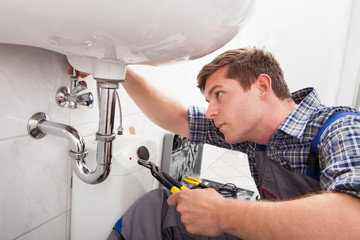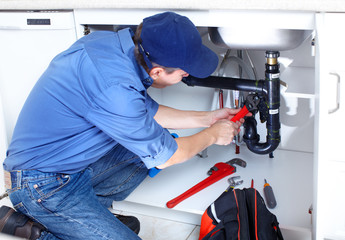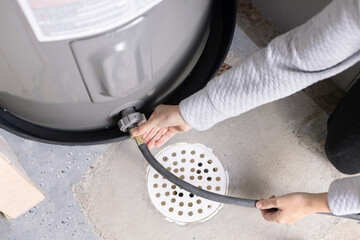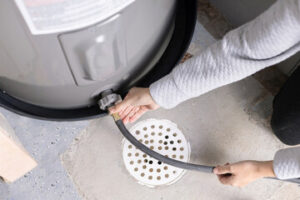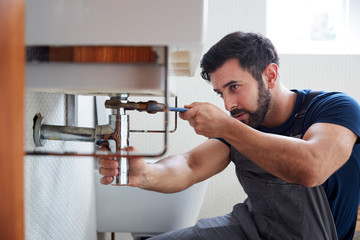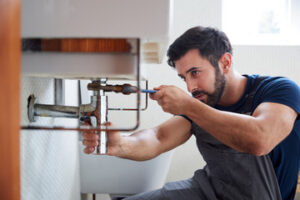Plumbers play a vital role in maintaining essential infrastructure and keeping communities safe. As a result, they enjoy substantial income potential. Whether you’re looking to start a one-person operation or expand your existing plumbing business, it’s important to develop a detailed business plan. Contact Ranger Plumbing Company for more details. 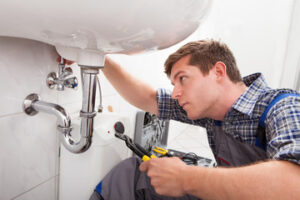
Plumbing is a highly skilled and technical trade. This makes it a highly respected profession in the industry and a solid career choice. It’s also an excellent way to build a stable income and enjoy long-term security. The field of plumbing continues to evolve rapidly and offers exciting opportunities for young people interested in technology. For example, new innovations include tankless water heaters and touchless fixtures. These innovations are designed to save energy and water while offering a more user-friendly experience for consumers.
Professional plumbers adhere to the highest standards of work. They use advanced tools and equipment to provide long-lasting solutions. They are also versed in building codes and fully comply with regulations when doing installations. This ensures the safety of the property and prevents costly fines. Additionally, they are knowledgeable about water conservation and can recommend ways to save money on utility bills.
Moreover, they have extensive knowledge about plumbing systems and are able to diagnose problems efficiently. They also know how to fix common issues such as clogged drains and toilets. They can also replace corroded pipes and fix broken water heaters. Lastly, they understand how to install kitchen appliances like sinks, dishwashers and refrigerators.
In addition to their skill and expertise, plumbers should have a friendly demeanor. This is important for establishing relationships with customers. It’s also a good way to keep clients happy and attract more business.
Despite the challenges that come with working as a plumber, it’s still an excellent job option for those looking to secure steady income and benefits. This is because of the high demand for plumbers and the variety of jobs they can take on. If you’re an ambitious person, then a career in plumbing may be the perfect fit for you.
Cons
Plumbing is an exciting career, but it can also be a dangerous one. Many of the skills required in this trade are physical, and there is a high risk of injury. This is especially true for plumbers who work in residential settings. To minimize these risks, it is important to wear protective gear and follow industry standards when working. Additionally, it is important to invest in a good insurance policy. For example, general liability insurance covers damage to third-party property, and can cost an average of $115 per month or $2,378 annually, according to Insureon. Other insurance policies include workers’ compensation and commercial auto, which cover medical expenses and lost wages.
Many plumbing businesses rely on customer referrals, so it’s important to provide a positive experience to earn their trust. One way to do this is by providing a quality plumbing website. The best plumbing websites are easy to navigate and feature a clear call-to-action (CTA) to contact the company for service.
Another way to capture leads is by offering specials and discounts on your website. This will entice new customers to try your services and help you win their business long-term. For instance, RW HVAC offers multiple coupons that users can access directly from their site. This is a great way to stand out from the competition and attract more customers.
In addition to attracting new customers, the right plumbing website will also help you rank higher in search engine results. By incorporating local keywords into your content, you can increase the likelihood that your website will appear in top positions on search engines. Also, by creating a blog, you can keep customers informed and updated about the latest plumbing trends. In addition, you can use social media to promote your plumbing business. These marketing tactics will help you build a brand and make your business successful.
Training requirements
Plumbers must be trained in the specialized skills of their trade. These include the ability to read blueprints and to work with a variety of different materials. They also need to be knowledgeable about building codes and regulations. It is important that a plumbing company’s staff understand these laws, as failing to comply can result in fines and other legal issues. Moreover, plumbing companies that are properly trained will have employees who know how to perform installations in compliance with the codes and regulations of their state and area.
Most plumbing jobs require a high school diploma or GED certificate. However, if you wish to become a master plumber, you may need more advanced training. This can be obtained through a program offered by a community college or a vocational school. These programs typically take four to five years to complete, and provide a combination of on-the-job training with classroom instruction.
Some plumbers specialize in a particular field, such as gas or sewer systems. These specialties require additional training and specialized equipment. Additionally, many states require licensing for plumbers. In order to become a licensed plumber, you will need to complete an apprenticeship and pass an exam. The cost of these programs varies, but you can expect to spend between $800 and $1000 for training.
In addition to these formal qualifications, plumbers must be skilled in the use of tools and have good math skills. They must be able to plan installation projects and determine which type of pipe is right for each system. Moreover, they must be able to read and write blueprints to prepare for site visits. Other qualifications include a valid driver’s license and the ability to perform basic maintenance tasks.
The first step in starting a plumbing business is to create a business plan. This document should clearly outline your goals and unique selling points. It should also list your target market and competitors. In addition, a business plan should include a financial forecast, a budget, and details about your current resources and funding requirements. Finally, it should specify the types of plumbing services you plan to offer, including residential and commercial.
Job outlook
In the current job market, plumbers are in high demand. The field is expected to grow faster than most other occupations, due in part to the aging of infrastructure and increasing population. Additionally, new plumbing technology is constantly developing, which requires trained professionals to install and maintain the systems.
The demand for plumbers is also growing because of the need for clean water and efficient waste management. These systems are necessary for everyday life, and the plumbing industry is a vital part of society. This translates to greater job security for those who choose this profession, as they can expect a steady stream of work.
Another benefit of a career in plumbing is the opportunity for advancement. After gaining experience and becoming proficient in the trade, plumbers can move into supervisory roles. This entails overseeing the work of other plumbers and ensuring that they follow strict safety and quality protocols. Those who are interested in advancing their careers can pursue further training or even start their own plumbing businesses.
Finally, a career in plumbing is a great choice for those who want to stay active and earn a good income. The pay for a plumber is higher than many other occupations, and it often includes paid on-the-job training. Additionally, the job is more flexible than some other types of employment.
The future outlook for the plumbing industry is positive, especially in the United States. The Bureau of Labor Statistics reports that the industry will grow at a rate that is significantly higher than average for all occupations. This is because of the need for skilled workers to repair aging infrastructure and install new plumbing systems. As the demand for plumbers grows, so will the wages. In addition, plumbers are not at risk of being replaced by machines, which adds to their job security. Additionally, the wages for plumbers vary by region and level of expertise. This makes it important for potential plumbers to understand how regional costs affect the pay. This will help them make an informed decision about which route to take for their career.
